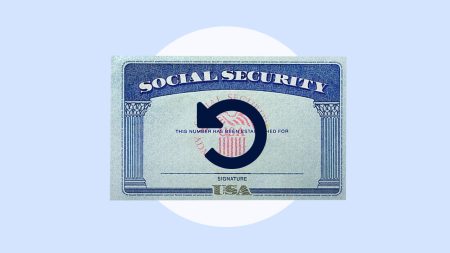Key takeaways
- Refinancing a rental typically has more stringent financial requirements than refinancing a primary residence.
- Refinancing a rental property can allow you to change the mortgage term, rate or both, or take out equity for financial needs.
Refinancing isn’t just for a primary residence. If you have a mortgage on a property — even if you rent it out — you may be able to save money by refinancing, but the process is slightly different than refinancing a home where you live. Here’s what you need to know.
How to refinance a rental or investment property
If you’ve decided it’s the right move for you, here’s how to refinance a rental property:
Step 1: Check your equity
Knowing how much equity you need in the home to qualify for a refinance could spare you a rejection. Equity is your ownership stake, or the percentage of the home you own outright. For most conventional loans, lenders ask that you have at least 20 percent equity in the property. You may need at least 25 percent equity for a rental refinance.
Step 2: Know the requirements
Lenders are generally less lenient with refinancing requirements on investment properties than primary residences. Some requirements might include:
- DTI ratio: For a primary residence, lenders may allow you to have a debt-to-income ratio of up to 50 percent if you have savings and good credit. Because lenders typically see an investment property as a riskier loan, you may be capped at about 43 percent.
- LTV ratio: The loan-to-value ratio represents how much equity you have in your home. It measures your current loan balance against the current property value. As mentioned above, you may need as much as 25 percent equity in a rental property to refinance it, meaning an LTV ratio no larger than 75 percent.
- Credit score: Most lenders require a credit score of at least 620 to qualify for a refinance. To get the most favorable loan terms, aim for a higher score.
- Title: In order to refinance a rental property, the title must be in your name. If someone else’s name is on the title, you won’t qualify for a refinance.
- Limited number of properties: If you’ve got a large portfolio of rental properties, you may not be able to refinance — or get the most favorable terms — at your local retail bank. Consider an investment property-oriented outfit that offers asset-based lending instead.
- Appraisal: Your lender will want proof that your property is worth what you say. You can get a broker price opinion in some cases, but the lender will probably insist on an actual appraiser. The lender will arrange this, but you’ll pay for it.
- Tenants: Having tenants is crucial to a rental refinance. If your property is vacant, it’s not generating any income, which can be a red flag to the lender.
Step 3: Compare refinance rates and lenders
As with all loans and financial products, it’s a good idea to shop around and get preapproved with at least three refinance lenders before you move ahead. By comparing terms, you can determine which offer works best in your situation — and find out if a lender is offsetting a lower rate with higher origination fees and other closing costs, for example.
Lenders generally consider rental properties riskier investments than primary residences. As a result, your new rental mortgage rate will probably be higher — often by around 50 basis points — than what you could get on your main home. Specialized lenders may charge even higher rates — at least a full percentage point higher — because they cater to a niche market, but they often work fast.
Step 4: Gather your documentation
Refinancing typically requires submitting a lot of documents. Your lender will want to see not only evidence of your personal income and obligations, but also reports relating to your rental property, like current lease agreements, an explanation of major one-time repairs or losses and HOA billing statements. Prepare your documents in advance, including:
- Proof of income: You’ll likely need to provide copies of recent paystubs to confirm your employment and income.
- Tax returns: The lender will also likely ask for copies of tax returns to verify employment history and income.
- Personal details needed for credit check: This includes your consent, full name, address, social security number and date of birth.
- Explanatory letters: If you have any gaps in income or a negative mark on your credit history that needs explaining, you can share that with the lender in a letter.
- Homeowners insurance policy: You must show the lender you have enough insurance coverage to protect the home.
- Recorded deed: This document shows you have a legal claim to the property.
If your property has a renter, many lenders will allow you to apply 75 percent of the current agreement as part of your income. In other words, if your tenant pays $10,000 annually, you can add $7,500 to your income.
Step 5: Submit your refinance application
If you have your documents ready, you can often complete your application relatively quickly, maybe even online. Most major lenders will underwrite your loan in-house, which can take between 30 and 60 days.
Step 6: Close on your new loan
You will need to sign the final documents when the loan is approved.
Should you refinance your rental property?
Before heading to your local lender for a refinance on your rental, take time to consider the benefits and drawbacks:
Benefits of refinancing a rental property
- Tap into your home equity: With a cash-out refinance, you could use the equity in a rental home to purchase more rentals, upgrade the ones you own, finance other investments, improve your own home, finance education, pay off debt or any number of other uses.
- Qualify for new terms. For example, you could change your 30-year mortgage to a 15-year mortgage with a refinance and save money on the loan in the long run. You could also lower your interest rate and your monthly payment, increasing your monthly take-home earnings from the rental.
Drawbacks of refinancing a rental property
- You’ll have to pay some money upfront. Like any other mortgage, a refinance involves closing costs and lender fees. Plus, if you need a property survey or appraisal, you’ll pay for those, too.
- You might initially lose equity. If you’ve been building equity and take a chunk of it out when you refinance, your rental property will temporarily lose value as an asset. It will take time to build back up the equity you used.
FAQ
Read the full article here












